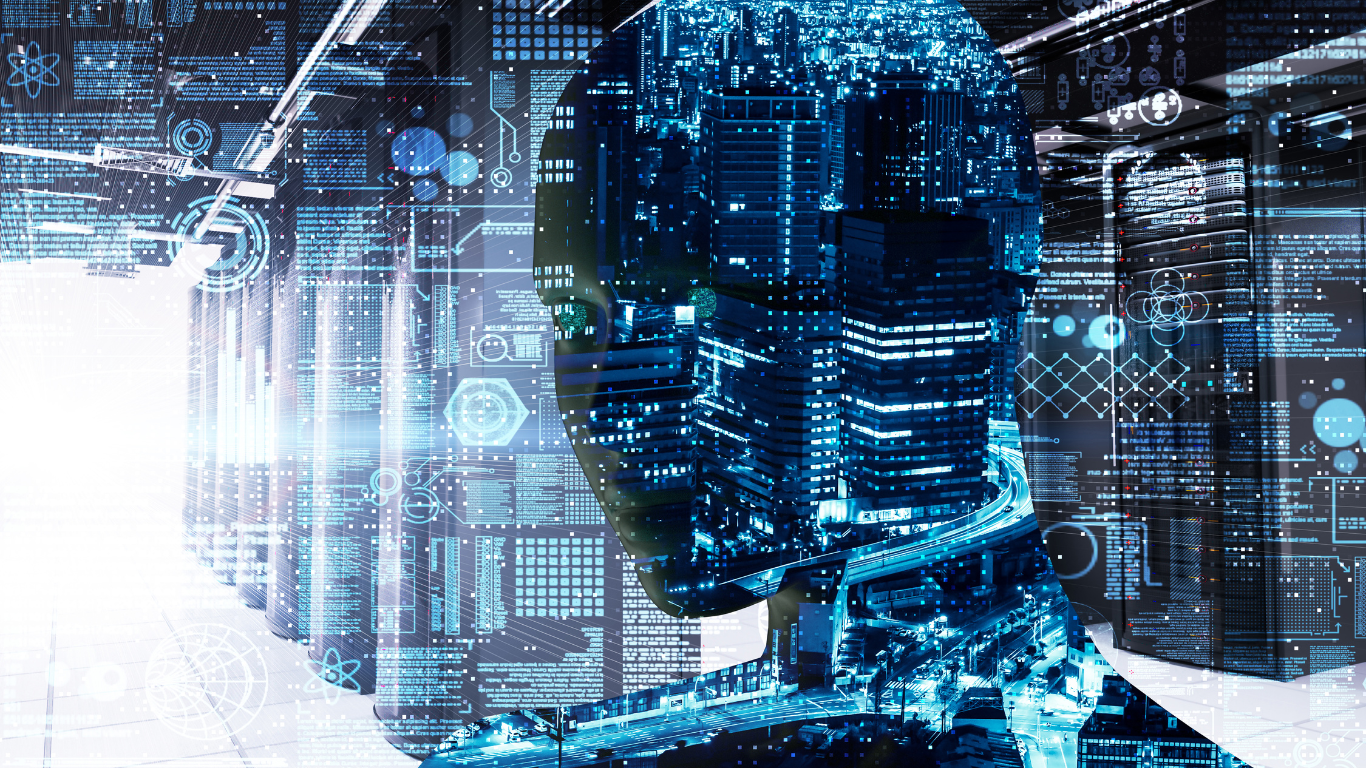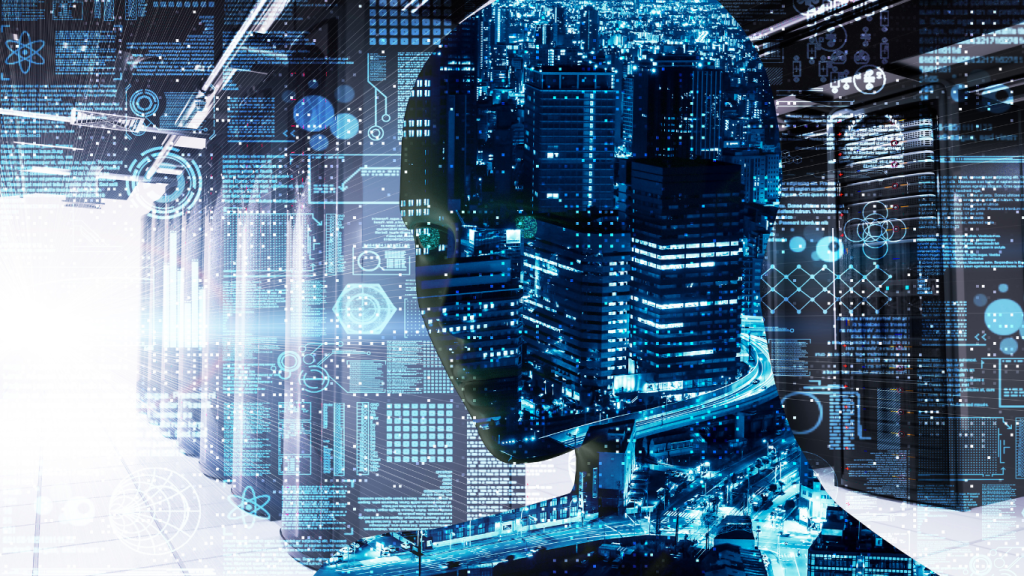

Today, as science and technology rapidly advance, we do not see such famous names. Most are unsung heroes. In the coming period, extending to 2050, I will share the answers we can provide through our minds, idea production capability, imagination, and clues to the question, “What are the future technologies that will change the world?”
In our heated debates, when asked, “What is the most important game-changing development in the world today?” some highlight climate change, the sustainability of our planet, and the green transformation in energy. Others point to geopolitical conflicts or the new values of Generation Z.
However, there is little objection when we say that “new technologies” are far more decisive in triggering chain reactions and rapidly transforming nearly everything.
Technologies have indeed radically changed our lives and will continue to do so, keeping us constantly dynamic within a process of continuous change. Processes that used to take decades now happen in a few months.
We deeply feel the impact of technology in every field, from communication to education, business to daily life. Thanks to artificial intelligence, autonomous vehicles, smart cities, biotechnology, space travel, and medical revolutions, our lives become more sustainable, efficient, and comfortable, enhancing our quality of life. Yet, we also face serious risks like cyber-attacks or radioactive leaks caused by the misuse or abuse of technology.
Technologies such as mobile devices, social media platforms, and video conferencing applications allow people to communicate instantly with each other and the world, removing barriers over long distances and creating a global society that facilitates human interaction.
Our minds and technologies
Marie Curie won the Nobel Prize in Chemistry for her discovery of radioactivity during her experiments with uranium. She discovered the radioactive property of thorium and isolated the element radium. Nikola Tesla, the founder of the science of radiology, made great inventions. Initially, he worked with Edison. Many of the projects we use today, like fluorescent lights, radar, and MRI devices, were created based on Tesla’s theories. He succeeded in wireless transmission of electricity.
Today, as science and technology rapidly advance, we do not see such famous names. Most are unsung heroes. In the coming period, extending to 2050, I will share the answers we can provide through our minds, idea production capability, imagination, and clues to the question, “What are the future technologies that will change the world?”
Artificial Intelligence and nanobots
Artificial Intelligence (AI) has infiltrated every aspect of our lives. It is used in machines, smartphones, robots, and many objects. Although this situation seems to cause job losses in some professions, in reality, AI also opens up new and more attractive job opportunities.
The transformation experienced during the Industrial Revolution is now happening with AI. Thanks to robots, dangerous jobs can be completed quickly and accurately without risking human safety.
Considering future technologies, it will be possible to virtually recreate deceased individuals by recalling memories from people’s minds and blending them with DNA samples through AI-nanobots. Additionally, it is expected that precise and challenging surgeries will be performed without open incisions and that the human brain will be connected to cloud technology through nanobots. Robots could also be used in military support or even as soldiers in wars.
Electric and autonomous vehicles
The concepts of electric vehicles and autonomous driving are not foreign to those who see 2024. However, in the future, these technologies are expected to completely overshadow the classical technologies in the transportation sector. We already see that the batteries of electric vehicles will be strengthened for longer use, and faster charging stations will become more widespread and easily accessible.
The widespread use of autonomous vehicle technology and the consequent significant reduction in the need for drivers are expected to significantly reduce accidents resulting in death and injury and allow people to have more free time. This technology is not limited to passenger vehicles; we will soon see driverless trucks and buses on the roads. Vehicle manufacturers are gradually adapting to this change. It seems that in the future, all vehicles produced will have electric or autonomous vehicle features.
Technologies facilitating life in megacities
The Internet of Things (IoT) is projected to be used in all electric appliances in the future. Thus, almost every device will be connected to the internet and cloud technology, performing tasks more successfully while reducing human burdens. For example, an IoT-enabled refrigerator could become an appliance that detects food shortages and places orders.
It is foreseen that by 2050, a significant portion of the world’s population (approximately 70%) will be living in megacities. This will make meeting many essential needs and improving environmental conditions impossible. Future technologies are trying to solve these problems.
Examples of developments that will change the world in this direction include living spaces and roads built on water, widespread use of vehicles with both land and air travel capabilities, and the production of trains capable of traveling at airplane speeds on the ground and underwater. It is also possible to move agricultural areas to open spaces in skyscrapers or floating areas on the water, and the widespread production of meat in laboratory environments.
Wireless batteries
Companies like SpaceX, Blue Origin, and Virgin Galactic provide clues for interpreting the future of space tourism. It is expected that space tourism will be among tourism types by 2050, even if it is expensive. Current research topics include whether life on other planets is sustainable. Given the current development speed of technology, the search for a habitable planet outside Earth, primarily Mars, and the possibility of moving there when our endurance runs out does not seem too utopian.
It is expected that in the future, smartphones, which have become an indispensable part of our lives, will be produced with extraordinary designs, featuring OLED screen technology and being charged without the need for cables. The success of charging batteries with energy obtained from photosynthesis by plants indicates that cable charging will become a thing of the past.
In addition to foldable screens and wireless charging of batteries, another technology expected to shine among future technologies is the projection of phone screens onto any surface. The ability to project the screen onto the skin, wall, or any surface will be made possible by a wearable technological device or a simple implant. It will not be surprising if this technology, which eliminates the necessity of carrying phones on us, becomes part of everyone’s life.
New technological innovations are rapidly pushing the healthcare sector forward. The potential to gather information about an individual’s lifestyle from a smartwatch gives healthcare professionals the ability to predict and even treat potential medical problems before the patient shows any symptoms.
In patient treatment, this technology trend will help doctors prescribe more personalized medicines, often referred to as predictive medicine. Wearable health devices, including health monitoring and remote patient monitoring devices, are also expected to become indispensable for healthcare delivery, with an estimated annual spending of $20 billion today.
Facial recognition technologies
Our faces have started to become good partners for technology. The story that began with facial recognition systems is now being further developed by many sectors that will use our faces for a variety of applications. The ability to unlock your phone just by looking at it will also be used to unlock your connected home and car. In the near future, it will be possible for a person to enter buildings, complete official tasks more easily, and use ATMs just by introducing their face.
Automation has already gone beyond being included in production lines. This new technology is already solving much more complex decision-making tasks in the food chain, from packaging juice boxes to delivering pizzas in driverless cars. Automation processes, combined with robotics, machine learning, and AI, will bring services or goods to our doorsteps more easily and automatically in multiple sectors, including food and beverage, medical, and customer services.
The continuously increasing amount of interaction between machines and humans has turned the devices we carry with us into massive data warehouses. These big data sets are waiting to be transformed into meaningful information and insights by businesses to provide better services.
Robots like humans
It is already known that chatbots, by making businesses accessible 24/7, are shaping the growth stories of businesses. One of the latest technologies on the horizon is chatbots powered by machine learning and predictive analytics technologies, which will provide brand new experiences by making customer communication more personal and intelligent.
Drones, especially used frequently for photo and video shooting today, are expected to take their place in cargo transportation by 2050 with advancing technology. It is predicted that not only cargo but also a food order or anything portable will be delivered to the address by high-speed drones with advanced ‘beyond visual line of sight’ systems. This technology seems to provide many advantages, from time savings to safe cargo delivery and even reducing road traffic.
Hyperloop technology, with trains reaching speeds of approximately 1020 km/h, is steadily improving its test stability with advancing technology each year. If these Korea-made trains open up for public use at their current speed by 2050, it will indeed usher in a new era in intercity and even intercountry transportation.
Another AI-powered technology expected to evolve is robots behaving, analyzing, reacting, and producing rational and logical solutions just like a human. Perhaps they may even possess the naivety and emotionality that some humans lack today, or they could become a threat to humanity, as many fear.
Nanobots, a type of microscopic robot technology at the nanometer scale, can be injected into the human body. We know that this technology is already being tested and experimented with, particularly in health fields like cancer treatment in some countries. By 2050, it is believed that this technology will enable the storage of parts of the human memory, similar to the cloud system in our smartphones, making it accessible whenever desired. Though it may be frightening, it could be highly beneficial for people with poor memory.
Travel to Mars
Elon Musk, a space enthusiast, continues to develop many projects aimed at space, especially Mars, although he has not yet managed to provide people with a firsthand view of Mars.
This situation seems likely to change in less than a quarter of a century. It’s not far-fetched to think that a trip to Mars will become as commonplace as visiting a different country today. Considering that humanity’s current greatest goal in science and technology is to reach Mars and even beyond, these journeys are highly probable.
Previously, significant progress was made when signals were sent to the brain using a prosthetic arm, thanks to the HaptX project. Thirty years from now, it is foreseen that prosthetics could work in full harmony with our brain functions, and in even more utopian thoughts, they could be much stronger and more functional than our existing limbs. While this would be beneficial for humanity as a whole, it also means that such technology could be a dangerous weapon in the hands of malicious individuals.
The prevalence of virtual reality glasses has increased significantly over the past decade. It’s envisaged that students using these glasses in a history class could travel three-dimensionally to specific times and geographies and even feel the physical environment they are in. If this comes to fruition, we can say that the children of that time will be quite lucky.
Smartphones, one of the greatest addictions of our age, may give way to new generation technology in the coming years. This technology comprises extremely smart, holographic wristbands that we can wear on our wrists. With these wristbands, we will be able to make touches on a holographic image instead of physical clicking, control everything with voice commands, and even be warned by the wristband in potentially dangerous moments.
Technologies and construction sector
Building houses with giant 3D printers is currently used in small-scale works, but the houses built in Belgium already show that massive constructions can be done with even larger 3D printers in the coming years. With the use of technology in the construction sector, it is predicted that house prices will decrease, physical labor will be reduced, construction times will shorten, and the population of cities will increase significantly.
A biotech company has produced a portable device capable of generating electricity from soil, and research is ongoing. The company, which operates on the principle of 100% natural energy, claims that its devices are fully eco-friendly. Organic materials derived from fertilizer and soil are transported into cells with irrigation and rainwater. Microorganisms then break down the organic molecules, releasing electrons and thus generating electricity. With the advancement of this technology by 2050, we can foresee that our environment will breathe a little easier.
Stopping aging
In 2020, Unity Biotechnology announced successful results from studies on anti-aging drugs aimed at treating age-related knee pain. Alkahest, on the other hand, is working to halt the cognitive and functional decline in patients with mild to moderate Alzheimer’s by injecting components found in young people’s blood into the elderly.
We hope that all these efforts will become fully functional in the future for people who wish to live up to 200 years.
Cybersecurity may not seem like a cutting-edge technology, but it progresses as rapidly as other technologies. This is partly due to the constant emergence of new threats. Malicious hackers trying to gain unauthorized access to data will not give up easily and will continue to find ways to bypass even the strictest protection measures. Cybersecurity will continue to protect us against hackers.
Food and biotechnology
In the future, our eating habits might be very different from what they are today. The times we spent eating meat and barbecuing may become stories told to young people. Due to the greenhouse gas effects of animals and various diseases transmitted from animals, meat consumption is expected to decrease. Companies like Beyond Meat and Impossible Foods have already established their place in the market with their alternative meat products.
The most intriguing approach is “Cultured Meat,” produced from “in vitro cell cultures” found in animal cells instead of slaughtered animals. By 2050, it might be possible to eat a Vitro T-Bone Steak in luxury restaurants served on wood-look plastic plates.
Current diets focused on vegetables and fruits and meatless alternative healthy eating programs have already started changing habits. People will need more edible plants. Since farms and fields cannot grow horizontally, vertical greenhouses and vertical farms will be established.
Technology in medicine
In addition to artificial organs, biotechnology and stem cell treatments currently being developed could also provide solutions for genetic diseases. With the mRNA technologies that perhaps saved lives during the COVID-19 pandemic, there is potential to eliminate cancer in the future. Heart disease and diabetes might be unknown by 2050. The eradication of such diseases can be achieved not only with drugs but also with gene-editing technologies.
Genetic disorders of unborn babies can be corrected with DNA-editing technology, thus ensuring that new-born children can lead healthy lives.
On land, air, and water
In the 1700s, an Italian prince dedicated his entire life to developing such a vehicle by wishing for a vehicle capable of operating on land, in the air, and on water. Scientists following his vision made it possible to achieve land, air, and sea transportation with a single vehicle. This dream has become a reality today.
Many of us think the Amphicar technology is very new, but it has actually existed since the 1960s. In fact, 4,500 units of Amphibious Car were sold in 1960.
These vehicles have developed very slowly, and mass production has not yet been achieved. Due to the laws of physics, the aerodynamics of a vehicle that moves in the air are very different from those of a vehicle that moves on land or water. For example, a vehicle must have a raised nose to move quickly on water, but for speed on land, a low body is required. What is the right body to perform both functions properly? This has been worked on for a few hundred years.
Amphibious vehicles are being produced and sold, but mass production that everyone can afford has not yet been achieved. Despite tremendous engineering work, these vehicles are still very costly in terms of materials and workmanship.
Mass production has not been achieved, but the Gibbs Sports Quadski vehicle has been produced considerably. This vehicle, which can transform from a land vehicle to a watercraft within a few seconds, has the ability to switch from an ATV to a JetSki.
Imagine a tank that leaves a warship and advances towards the shore. It’s full of soldiers. There’s no need to evacuate soldiers from the ship. They come directly to the shore with the tank. This has also been done. In the U.S., there is an amphibious tank capable of transitioning seamlessly from water to land and carrying 21 soldiers. It has speeds of 13.1 km/h in water and 72 km/h on land.
Of course, there are also vehicles that can move in the air, on land, and in water. The Dornier Seaster model is a traditional seaplane. It has wings and propellers for flying, the right surface for entering the water, water motors, 100% corrosion-resistant materials, and infrastructure to advance on land. Aeromobil has introduced the world’s first commercial flying car. Flying cars exist now. The Slovak company aims to launch the world’s first road-legal airplane, which will shake up the transportation sector, soon.
I have tried to describe only a small part of the technological breakthroughs. Everything is developing so rapidly that we are falling behind in understanding and keeping up. If we do not make a special effort today to become masters of technology rather than its servants, our job will become increasingly difficult, and beyond being an unparalleled boon, it could degrade the quality of our lives to the point of becoming a burden.


